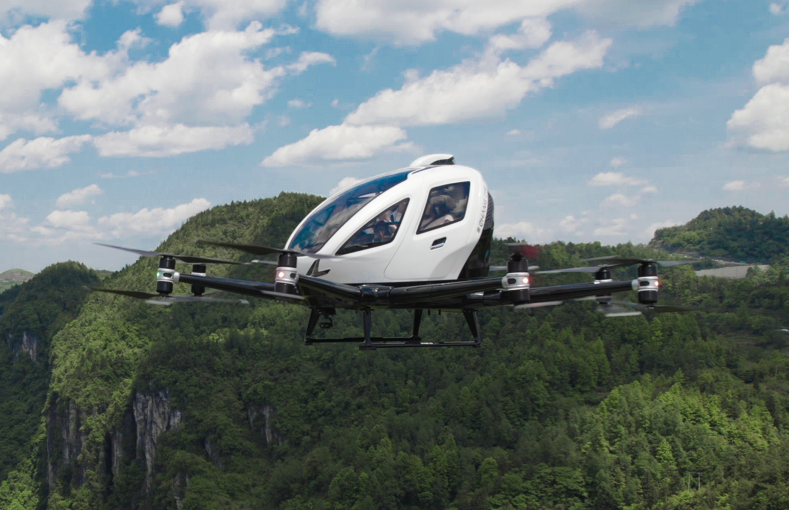
EHang has secured an RMB 1 billion ($149 million) credit facility from a Chinese bank to support its operations.
The funding line will be provided by the Guangzhou branch of Agricultural Bank of China, ranked the third largest commercial bank in the world by S&P Global in 2021.
EHang’s revenues have declined since the Chinese startup shifted its business model to being both the operator and manufacturer of its electric vertical takeoff and landing (eVTOL) vehicles. The Chinese autonomous air taxi developer had RMB 204 million of cash in hand at the end of the second quarter, down from RMB 247 million at the end of 2021 as it continues to invest in the development of its vehicles.
Guangzhou-based EHang was the first of the eVTOL startups to go public, in December 2019. It is developing the EH216S two-seat multicopter autonomous air taxi and selling uncrewed logistics and firefighting versions of the same vehicle.
Certification of the EH216S by the Civil Aviation Administration of China has been slowed by the COVID-19 pandemic, but EHang still hopes it can launch commercial operations in China this year. The company is conducting trial flights under its 100 Air Mobility Routes initiative.
In Spain, meanwhile, EHang has entered into a collaboration with air navigation services provider Enaire to promote research and development (R&D) into urban air mobility (UAM) and the U-space framework for the integration of uncrewed aircraft into national airspace in Spain and across Europe.
On June 13, Spain’s Civil Aviation General Directorate adopted the 2022 National Action Plan for the deployment of U-space. As part of the plan, Enaire aims to be certified as the sole common information services provider (CISP) to disseminate the data that will allow U-space services to be provided.
Europe’s U-space regulation, which takes effect across the EU in January 2023, lets each state decide the model for providing U-space services. Spain has opted for a centralized model in which Enaire will be the sole CISP, coordinating information exchange between multiple U-space service providers.

Comments